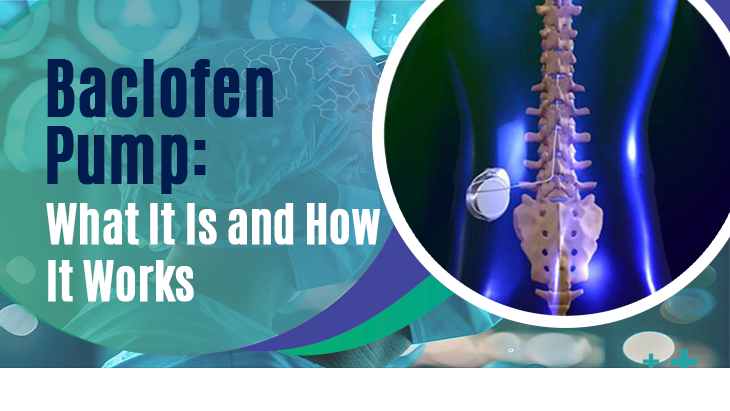Chronic conditions like severe spasticity can significantly impact a person’s quality of life. For individuals struggling with conditions such as cerebral palsy, multiple sclerosis, spinal cord injuries, or severe muscle spasticity, finding effective relief can be challenging. The baclofen pump offers a promising solution for managing these symptoms when other treatments have failed.
In this blog, we will explore what a baclofen pump is, how it works, and why it might be an effective treatment option.
What is a Baclofen Pump?
A baclofen pump, also known as an intrathecal baclofen therapy (ITB) pump, is a medical device that delivers medication directly to the spinal cord to help control severe spasticity. The pump is implanted under the skin of the abdomen and connected to a small, flexible catheter that delivers the medication—baclofen—directly into the intrathecal space around the spinal cord.
This direct delivery system allows for more effective management of symptoms with significantly lower doses of medication compared to oral administration, minimizing side effects and improving patient outcomes.
How Does the Baclofen Pump Work?
The baclofen pump continuously delivers a small, controlled amount of baclofen into the cerebrospinal fluid surrounding the spinal cord. This precise delivery targets the nerve signals responsible for spasticity, helping to relax the muscles and reduce the symptoms associated with conditions like:
- Cerebral Palsy
- Multiple Sclerosis (MS)
- Spinal Cord Injury
- Brain Injury
- Stroke-related Spasticity
Here’s how the process works:
- Implantation: The pump is surgically implanted under the skin in the abdominal area. A catheter is then placed in the intrathecal space of the spine and connected to the pump.
- Medication Delivery: The pump is programmed to deliver a precise amount of baclofen directly to the spinal cord throughout the day.
- Adjustable Dosage: The dosage can be adjusted by the physician using a specialized programmer, allowing for personalized treatment based on the patient’s specific needs.
- Refills and Maintenance: The pump needs to be refilled with medication periodically (every few months) through a simple outpatient procedure. Routine checks ensure that the device is functioning properly.
Benefits of the Baclofen Pump
- Targeted Therapy: Directly delivers medication where it is needed most, reducing the risk of side effects associated with oral medications.
- Improved Symptom Control: Provides more consistent and effective relief from severe spasticity, allowing patients to regain mobility and improve their quality of life.
- Lower Medication Dosage: Because the medication is delivered directly to the spinal cord, much smaller doses are needed, minimizing common side effects like drowsiness, confusion, or nausea.
- Adjustability: The dosage can be easily adjusted based on the patient’s response, making it a highly customizable treatment option.
- Enhanced Quality of Life: Reducing spasticity can improve a person’s ability to perform daily activities, enhance comfort, and reduce caregiver burden.
Who is a Candidate for a Baclofen Pump?
The baclofen pump is generally recommended for individuals with severe spasticity that has not responded well to oral medications or other treatments. Candidates often include:
- Patients with severe muscle spasms due to neurological conditions.
- Individuals who experience significant side effects from oral baclofen.
- Those who require higher doses of medication that are not manageable through oral administration.
Before implantation, patients undergo a screening test, where a small dose of baclofen is administered directly into the spinal fluid to evaluate its effectiveness in reducing spasticity. A positive response often indicates that the patient could benefit from long-term pump therapy.
Risks and Considerations
While the baclofen pump can offer significant benefits, it is not without risks. Potential complications may include infection, pump malfunction, or catheter issues. It’s important to discuss these risks thoroughly with your healthcare provider to understand the benefits versus the potential drawbacks.
Patients also need to adhere to follow-up appointments for refills and pump adjustments to maintain optimal therapy. Missing these appointments could lead to severe withdrawal symptoms or complications.
Conclusion
The baclofen pump offers a highly effective treatment option for individuals struggling with severe spasticity. By delivering medication directly to the spinal cord, it provides targeted relief, improves functionality, and enhances overall quality of life. If you or a loved one is dealing with chronic spasticity and current treatments aren’t providing sufficient relief, speak to your healthcare provider about whether the baclofen pump might be right for you.
If you have any questions or would like to know more about baclofen pump therapy, don’t hesitate to reach out to your healthcare provider or a specialist in pain management and neurology.
Let us know if you need more information or specific adjustments!

